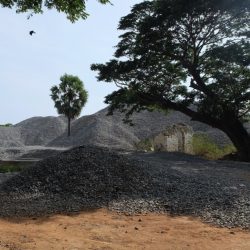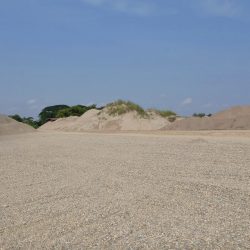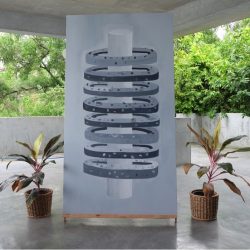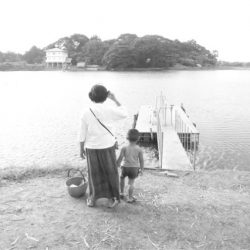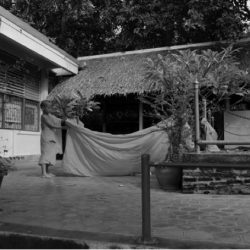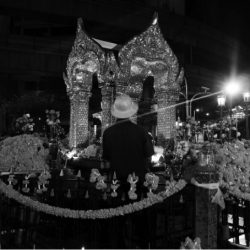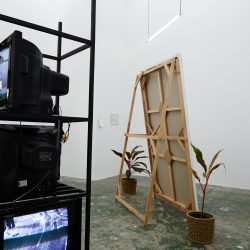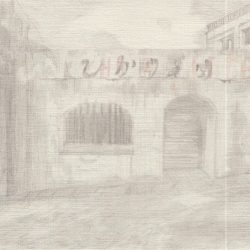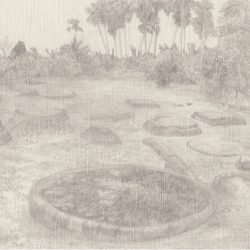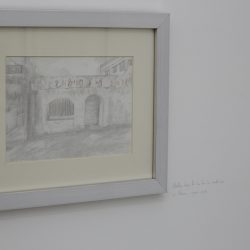RECENT EXHIBITION BY ORAWAN ARUNRAK TURNS THE GALLERY INTO A SPACE OF ORIGIN, FOR THOUGHTS TO COME ABOUT AND MOVE FORWARD FROM.
When one travels and experiences places and cultures anew, we often consider and map our encounters as outlying entities, something we come across rather than that which we may give cause to. Artist Orawan Arunrak traveled extensively during the past two years, visiting Cambodia, Laos, Vietnam, Sri Lanka, Japan and several provinces in her home country, Thailand, and while observing the towns and cities she passed through, found her focus falling, however, upon both the structures of systems and the parameters those experiences were housed within, as well as the ways in which thought puts our understanding of a particular time and place in motion.

Zones and Verbs by Orawan Arunrak at Cartel Art Space, Bangkok
“Experience has to be more conscious with life,” Arunrak describes, and just as when we draw conclusions, change our minds, jump from one thought to the next or remember and rethink things already thought, what her recent exhibition, Zones and Verbs articulates is the import of the spaces in-between; the places moved not to but through as we pass from here to there, and the time passed between that which was then and what is now. “The things outside, they are still going on and it is not black and white,” furthered Arunrak. “I need to give you space to imagine, your eyes outside are the color.”
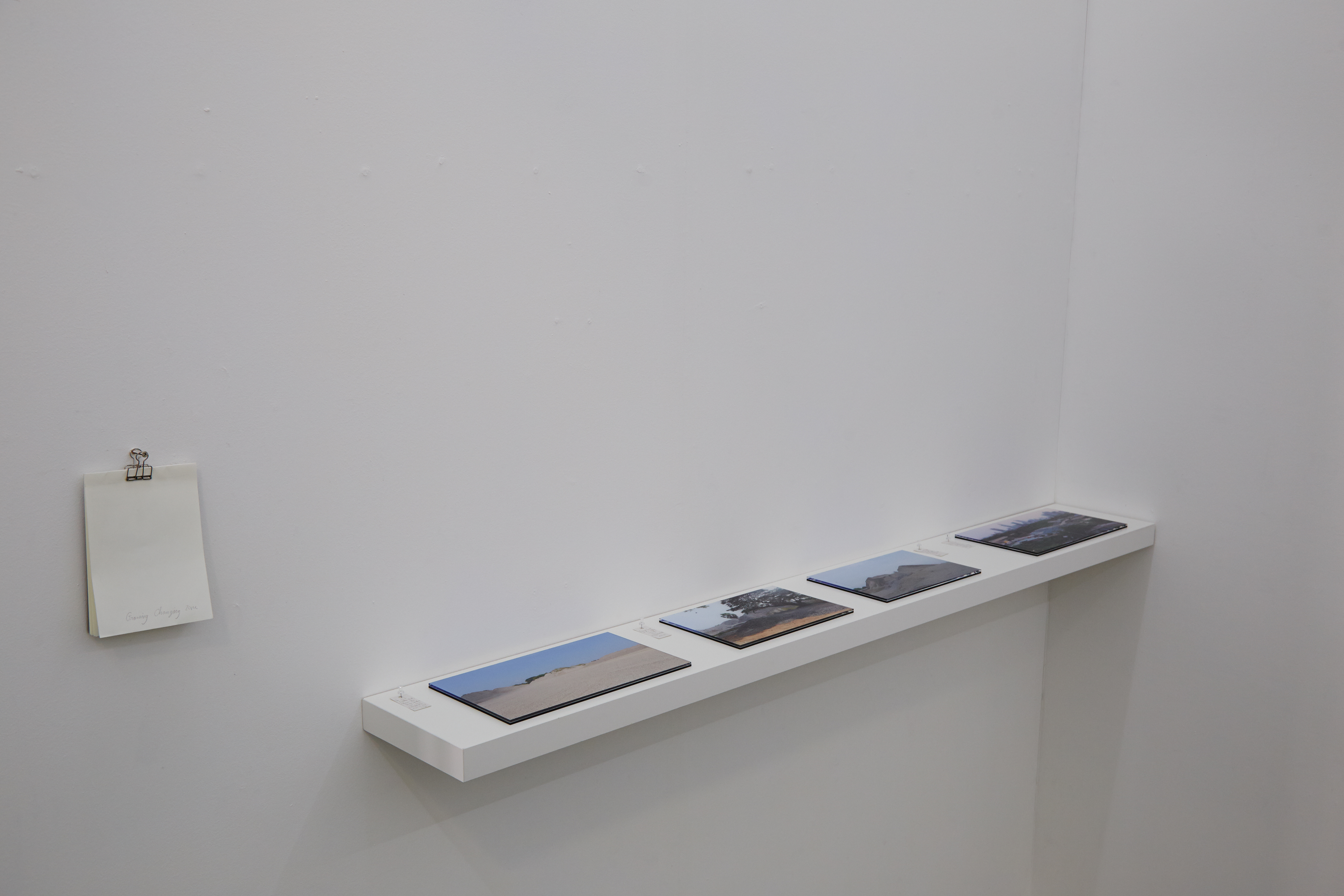
The ‘Growing and Changing’ zone, Zones and Verbs by Orawan Arunrak
Arunrak’s zones are four in number and presented within the venue of Cartel Art Space in a manner more reminiscent of an ensemble or a chorus than an A to B, linear type of sequence. One might begin at ‘Growing, Changing’ zone, a series of four photographs taken in Vietnam, Sri Lanka, Cambodia and Laos depicting spaces consumed by states of change. Set as on a tabletop rather than hung, the images of land being transformed from what was into what is to come are altered from that of excavations to something more of foundations, a record of functions in flux where the information provided denoting the time and place of capture is meant to serve not as occasion to reminisce or reflect, but rather as starting points of departure to build forth and further from via the viewers own interpretations of the location’s histories and inquiries into their futures.
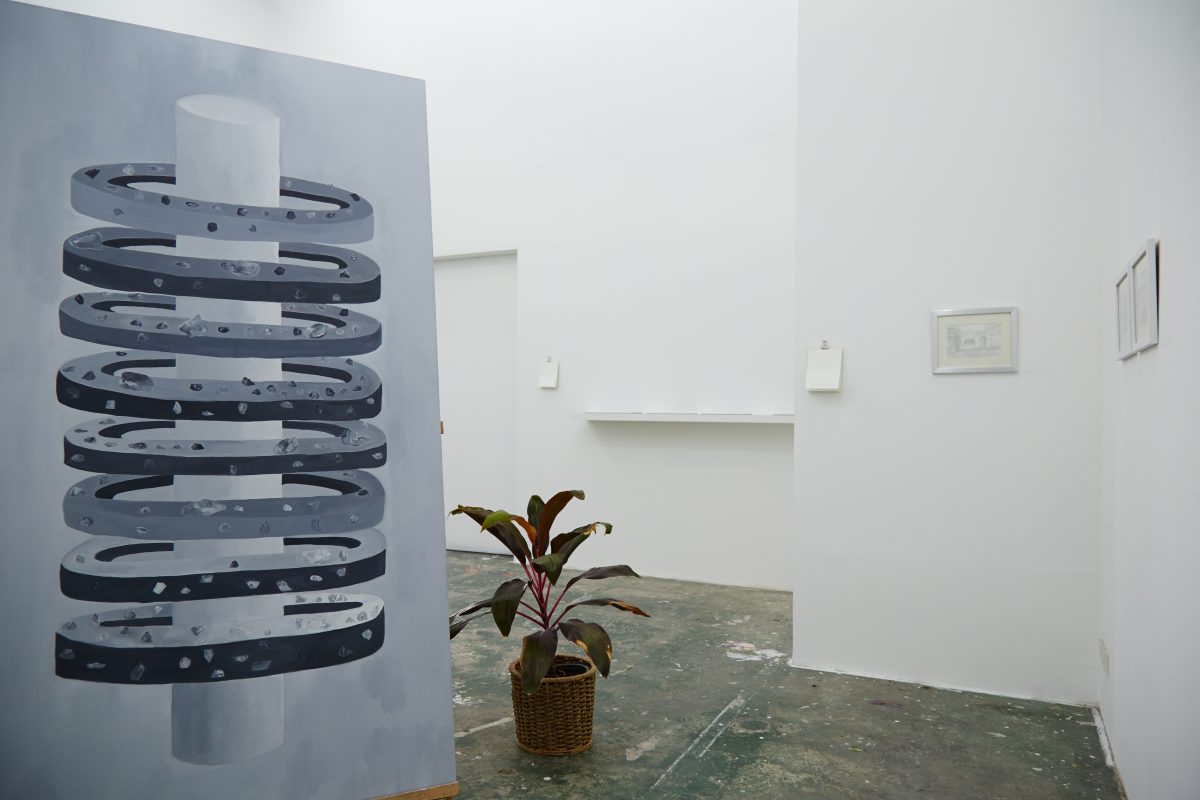
Zones and Verbs by Orawan Arunrak at Cartel Art Space
The ‘Mediating, Painting’ zone differs in its utilization of repetition rather than instance as it requests for one to zero in on a single point and place in time. The piece is both documentation and the result of a one-month period of time that the artist spent working at the Buddhadasa Indapanno Archives in Bangkok’s Wachirabenchathat Park. For 30 consecutive days Arunrak joined daily chants at 7:30 am, following which she would paint from 10am – 4pm prior to concluding the ritual/cycle with the evening chant at 5:30pm. “Within that 30 days I observed and grew a better understanding of how dhamma functions can be input in space,” described Arunrak “which I thought of as an isolation from chaos, using painting as a point from which to start conversations with those passersby.”

‘Cleaning Praying’ zone in Zones and Verbs by Orawan Arunrak at Cartel Art Space, Bangkok
Configured in a tower-like formation of three televisions stacked upon one another, the ‘Cleaning, Praying’ zone moves up and out both in physical form and content, as the moments captured in the short videos, a boat coming to pick up passengers to transport them across a river, the daily cleaning of Erawan shrine following visitors donations of flowers and incense and the process of learning to fold robes undergone by novice monks at a temple in Ratchaburi, Thailand loop upon themselves while surrounded by and surrounding one another. The films, while depicting a particular event, succeed to document but also somehow accumulate – as if our awareness of them increases the space around them, just as moments cannot be separated from those which precede or follow, withal others playing out in turn and tandem.
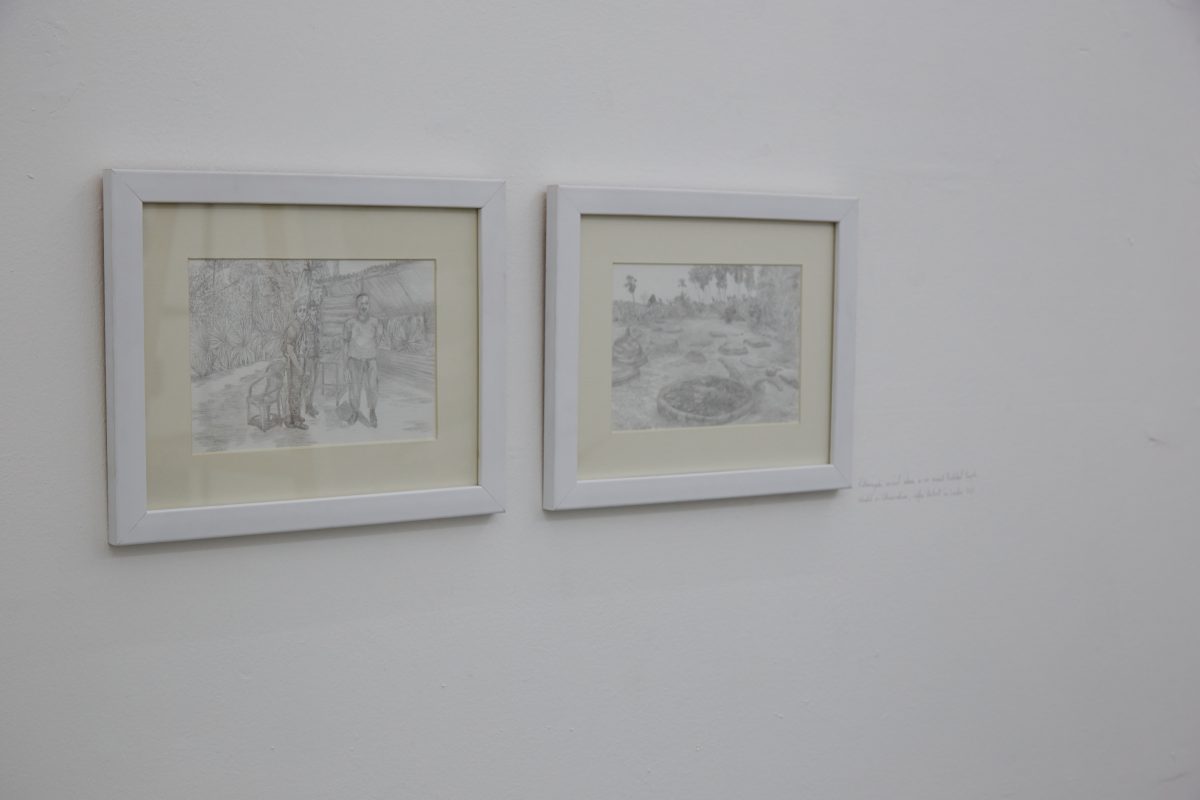
The ‘Keeping and Waiting’ zone, Zones and Verbs by Orawan Arunrak at Cartel Art Space, Bangkok
A fourth zone sits even-handedly poised between then and now, ‘Keeping, Waiting, Hiding’ within drawings of select historically significant locations encountered during the artist’s travels throughout the greater Southeast Asian region. “The wait for something new to happen, and the wish to hold on to what has already been there, to co-exist meaningfully,” describes Arunrak, is illustrated in pencil through documentation/representation yet also unavoidably the artist’s own interpretation. This element of a subjective nature brought into the work through the practice of drawing succeeds however not in a limiting of the zone’s archival nature, but rather in facilitating a mapping of much greater dimension than here/now or even then/when through incorporation of interpretation and imagination. “Such archival process, such anticipation, such concealment,” suggests Arunrak, “always stimulates further investigation.”
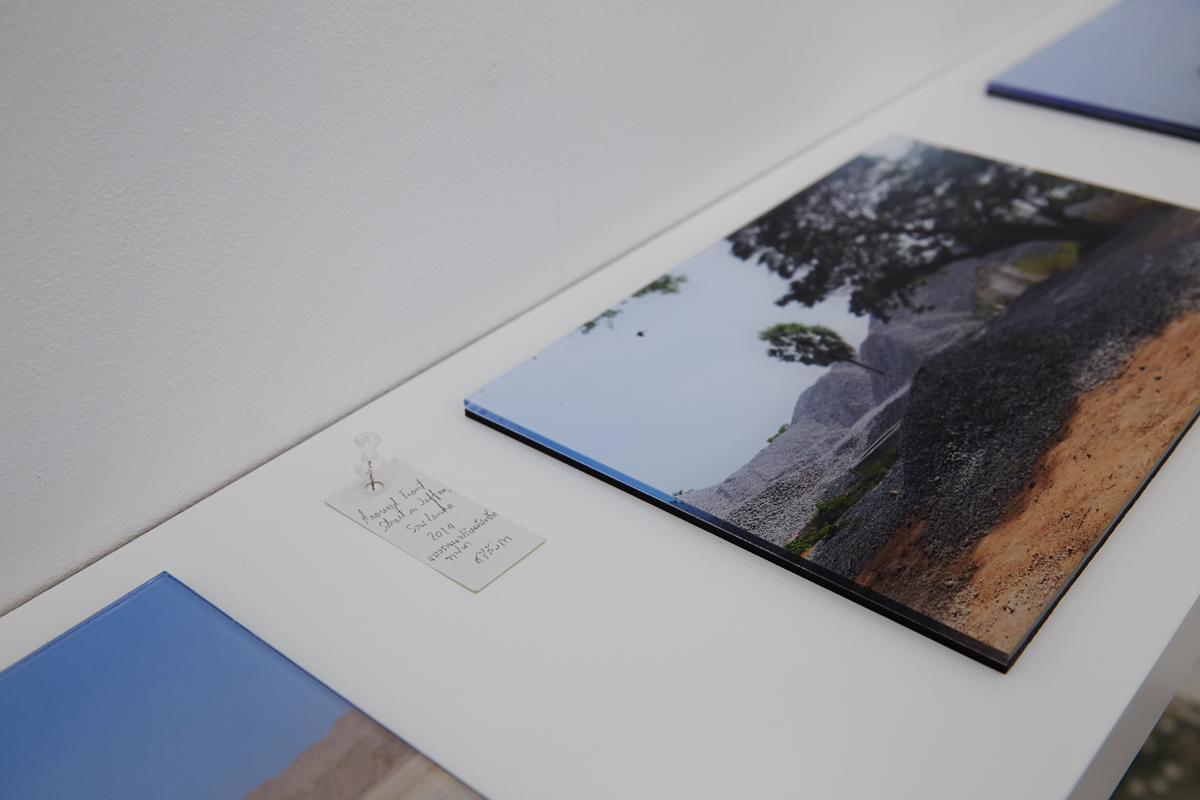
The ‘Growing and Changing’ zone, Zones and Verbs by Orawan Arunrak at Cartel Art Space, Bangkok
Through Arunrak’s Growing, Changing, Mediating, Painting, Keeping, Waiting, Hiding, Cleaning and Praying – we are reminded of the fact that what we see and experience can provoke what we think and imagine; while in a likewise fashion what we think and imagine can elicit what we see and experience. Viewers are provided opportunity to witness both the development of a story in time, and its journey through space, both of which are multiplied in dimension by that which the viewer themselves brings forth, – allowing for the reading/writing of a story that, not unlike our own experience, never returns to the same place in quite the same way twice.
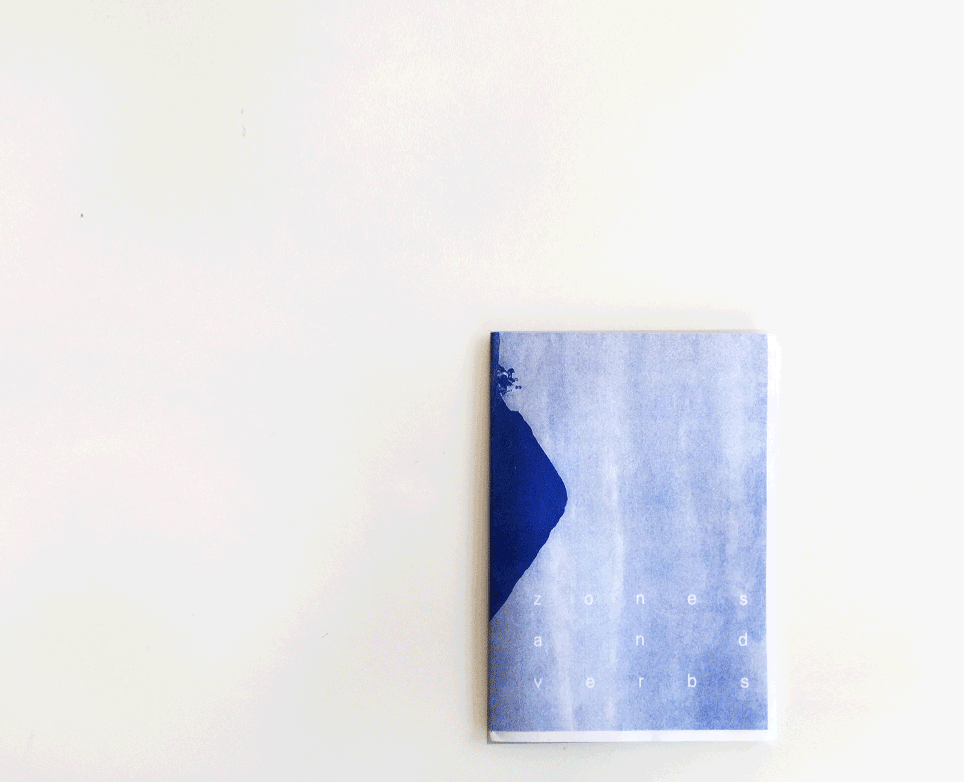
Zones and Verbs Exhibition Catalog, by Orawan Arunrak at Cartel Art Space, Bangkok
TEXT: REBECCA VICKERS
www.orarunarunwak.com



